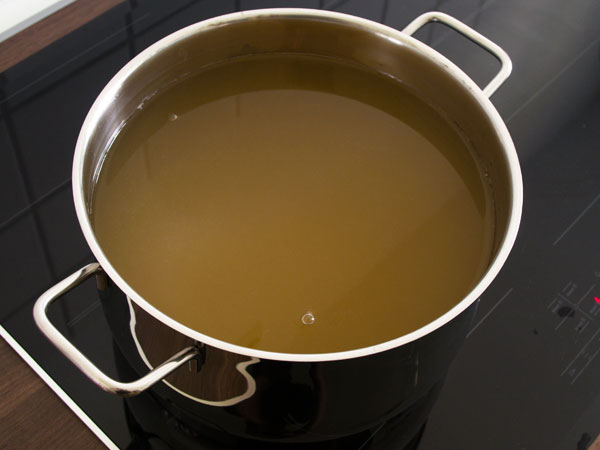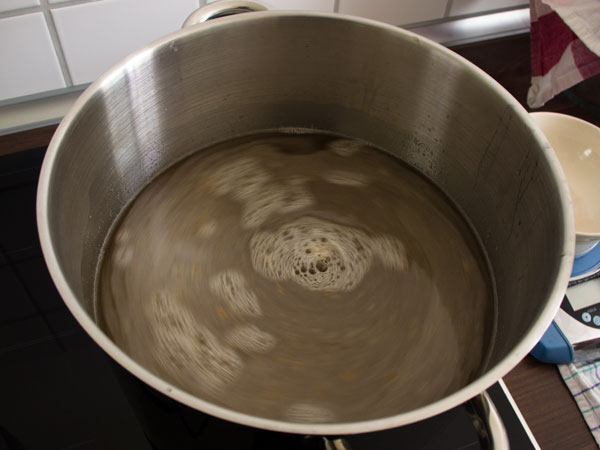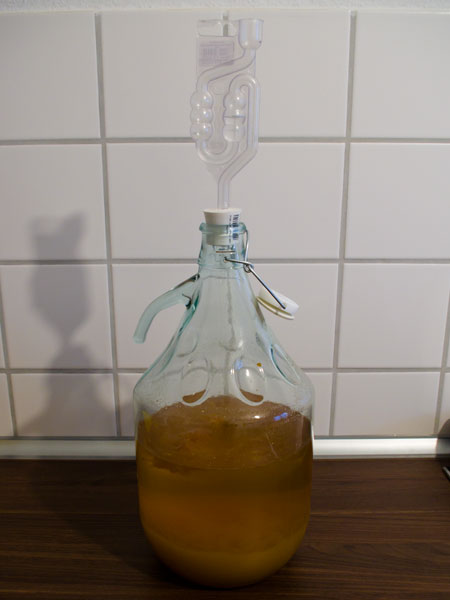After introducing hardware and ingredients used to make mead, the time for actually making some is finally here. This week I want to show you how everything comes together and what you have to look out for when doing it yourself. So without further ado, here are the steps I followed to set up my mead.
Preparations
Before actually using any ingredients make sure to sterilize all your pots, funnels, spoons and whatever you intend to use. Working cleanly is paramount as unwanted bacteria can easily spoil your unfinished mead. The easiest way to make sure everything is sterile is to put it in boiling water for about 5 minutes.
Have everything ready and measure your ingredients beforehand. This will make working much more relaxed and prevent errors due to hectic. Also take into account that you have to slowly bring your yeast to room temperature. Suddenly dumping cold yeast into warm honey water isn't a good idea.
In case you didn't read my initial post about this project, here is the list of all the ingredients again.
Recipe from bee-info.de
Get Cookin'
The first step is to pour all your honey into a large pot and warm it up carefully. It mustn't get hotter than 36°C or otherwise you will lose some flavor. The goal is to make it easier for the honey to mix with the other ingredients. Use a thermometer to check the temperature and as soon as the honey is above 30°C it should be ready to mix.


While the honey is heated slowly, take another large pot and pour in the apple juice and water. Heat the mixture just like the honey so that it doesn't get hotter than 36°C. When the honey and the apple juice water are warm enough, pour the apple juice water into the pot with the honey and stir thoroughly.
Now that you have some kind of apple and honey water, take about half a cup of it and add the lecithin to that. Stir until the lecithin has dissolved completely. My advise is to sift the lecithin beforehand, otherwise you will end up like me and have a hard time getting rid of any lumps. Pour the lecithin mixture back into the pot, add the malic acid and stir again.

The next step is important but tedious: Let the mixture cool down to room temperature. This will take quite a while and I had to wait 6 to 8 hours since it's currently pretty hot around here. Because the next thing to do is adding yeast, you have to make sure the mixture isn't too hot or the yeast will die. A temperature of 20°C to 25°C is best for the yeast so plan accordingly. Either prepare everything in the morning so it's cooled down by the evening or make it in the evening and let it cool overnight.

When everything has cooled down you can add the yeast and the shredded apple and stir. Afterwards fill the yeast mixture into a sterilized fermentation jar and seal it with the fermentation lock. Fill the lock to 1/3 so it doesn't overflow or drip into the mead. The recipe above is for a 10l fermentation jar. Since I have two small jars, I split the mixture evenly.

Wait For It...
Store the fermenting mead away from direct sunlight and in a warm place. Like I mentioned earlier, 20°C to 25°C is best for the yeast doing its job. During fermentation some CO2 will be released which will pop out of the fermentation lock. The first fermentation should take from 7 to 20 days, after that the process slows down and you can separate liquid and yeast.
During the first fermentation you should agitate the mixture form time to time. At the beginning every day, then twice a week. How to separate the yeast and what comes next will come at a later time, because I'm still waiting myself. Get updates on how it continues by following me on Twitter or subscribing.
Title image via pixabay.